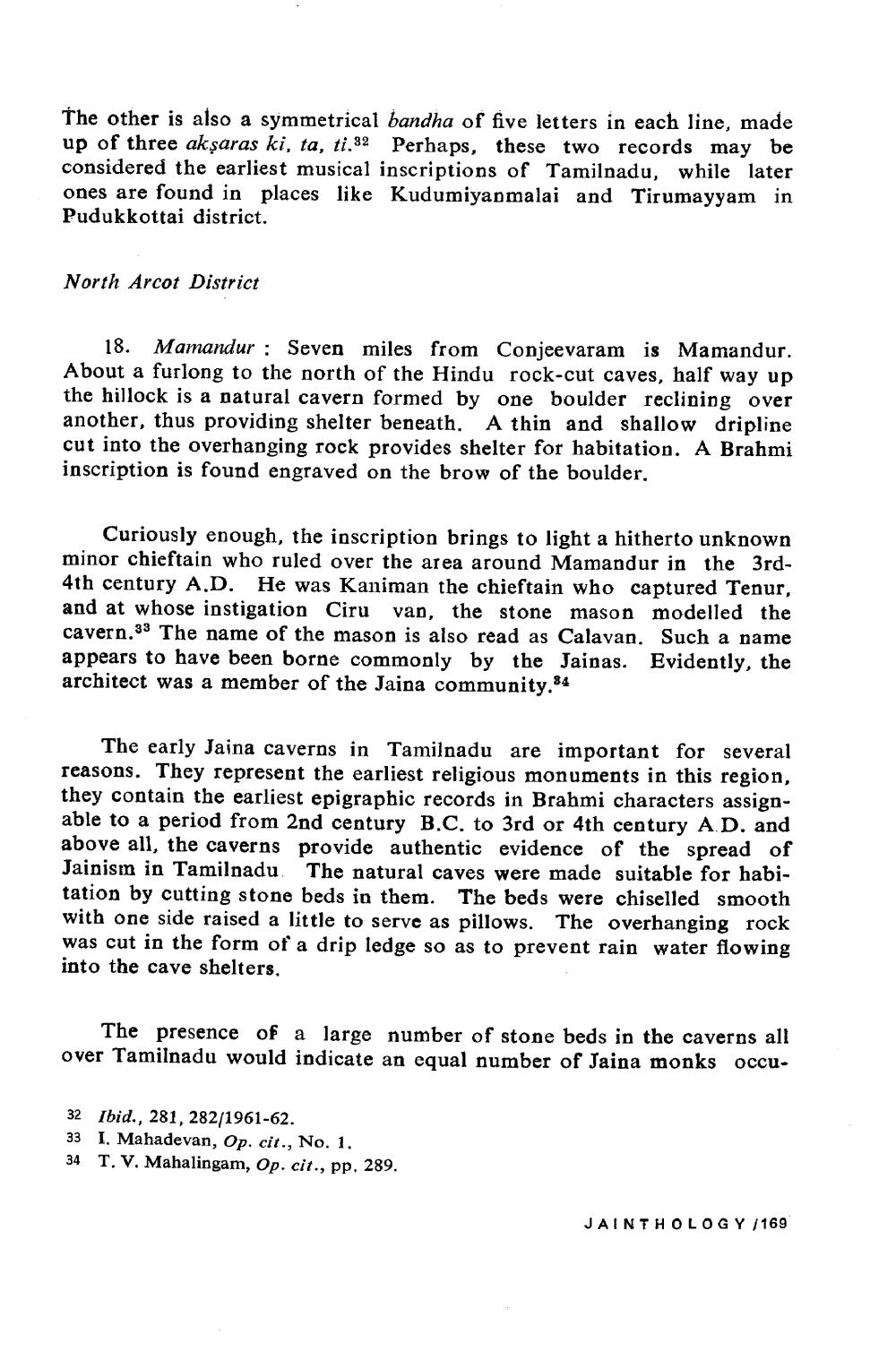________________
The other is also a symmetrical bandha of five letters in each line, made up of three aksaras ki, ta, ti.32 Perhaps, these two records may be considered the earliest musical inscriptions of Tamilnadu, while later ones are found in places like Kudumiyapmalai and Tirumayyam in Pudukkottai district.
North Arcot District
18. Mamandur : Seven miles from Conjeevaram is Mamandur. About a furlong to the north of the Hindu rock-cut caves, half way up the hillock is a natural cavern formed by one boulder reclining over another, thus providing shelter beneath. A thin and shallow dripline cut into the overhanging rock provides shelter for habitation. A Brahmi inscription is found engraved on the brow of the boulder.
Curiously enough, the inscription brings to light a hitherto unknown minor chieftain who ruled over the area around Mamandur in the 3rd4th century A.D. He was Kaniman the chieftain who captured Tenur, and at whose instigation Ciru van, the stone mason modelled the cavern.33 The name of the mason is also read as Calavan. Such a name appears to have been borne commonly by the Jainas. Evidently, the architect was a member of the Jaina community.84
The early Jaina caverns in Tamilnadu are important for several reasons. They represent the earliest religious monuments in this region, they contain the earliest epigraphic records in Brahmi characters assignable to a period from 2nd century B.C. to 3rd or 4th century AD. and above all, the caverns provide authentic evidence of the spread of Jainism in Tamilnadu The natural caves were made suitable for habitation by cutting stone beds in them. The beds were chiselled smooth with one side raised a little to serve as pillows. The overhanging rock was cut in the form of a drip ledge so as to prevent rain water flowing into the cave shelters.
The presence of a large number of stone beds in the caverns all over Tamilnadu would indicate an equal number of Jaina monks occu.
32 Ibid., 281, 282/1961-62. 33 I. Mahadevan, Op. cit., No. 1. 34 T. V. Mahalingam, Op. cit., pp. 289.
JAINTHOLOGY /169




